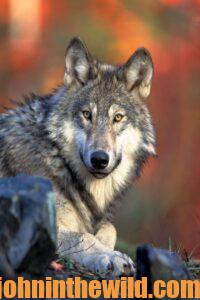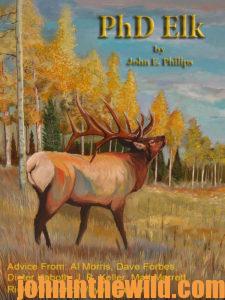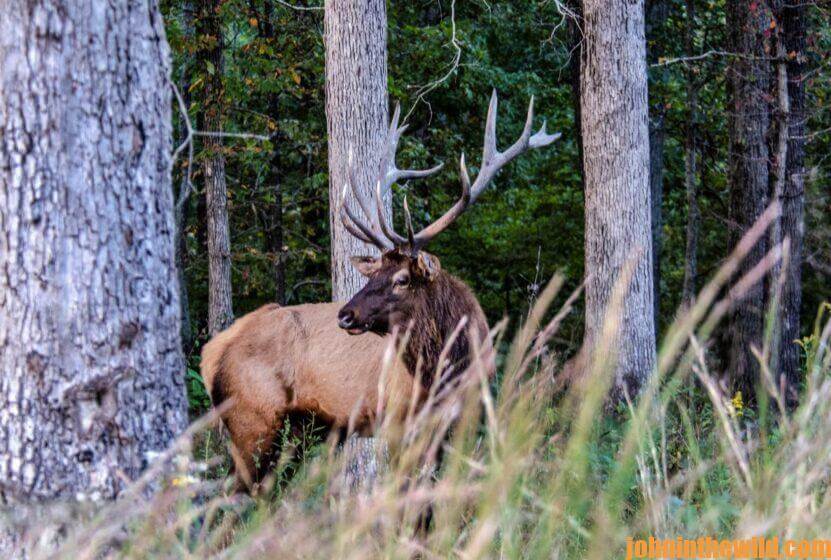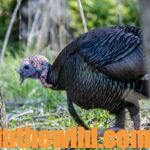Wolves have become problems in some states as predators on elk. In an online questionnaire about their wolf-hunting experiences, members of the Rocky Mountain Elk Foundation (https://www.rmef.org/) offered valuable tips to help more hunters enjoy the challenge and fill their wolf tags. The RMEF members’ goal in sharing this information is simple: more successful wolf hunters mean better balance in areas where undermanaged predator populations are impacting elk and other wildlife.

“Elk are the inspiration behind our organization’s 6-million-plus acres of habitat conservation,” says David Allen of the RMEF. “No conservation group has a membership more invested in elk country, more affected by wolves or more passionate about achieving balance. That’s why RMEF members are eager to share their collective experience in a type of hunting still new to most of us. In parts of the northern Rockies, burgeoning numbers of wolves, bears and lions are compounding habitat issues, all contributing to making elk-calf survival rates too low to sustain elk herds for the future. RMEF continues to conserve habitat, while supporting litigation and legislation to clear the way for wolf management via hunting. But wolves are providing a challenge that can make adequate population control easier said than done. Of the 710 respondents to the questionnaire, less than 7 percent killed a wolf during the inaugural hunting seasons in Idaho and Montana.
“Lack of success was not for lack of trying. Half of the respondents spent 8 or more days afield in a year, with their eyes peeled for wolves. More than 60 percent of respondents said wolf sign was plentiful in their hunting area, while another 27 percent encountered some tracks, scat, vocalizations, etc. Yet only 47 percent of respondents actually saw a wolf. Among those who bagged a wolf, 20 percent credited their success to a coincidental encounter with their quarry. Calling, watching and waiting in a likely area and stalking were reported as the most-productive proactive hunting strategies for wolves.”
Here are the top-10 wolf-hunting tips from the RMEF members:
1) Stay close to elk. If you can find a herd of elk, especially a herd a mile or more from a road, wolves will show-up.

2) Pattern wolves like other game. Scouting will help you find travel routes, crossings, etc. Wolves tend to take the easy paths: roads, trails and frozen lakes.
3) Get hunting permission from private landowners. Lots of landowners are happy to have wolf hunters, and your hunting wolves may lead to other hunting opportunities later.
4) Never shoot a collared wolf. Collars are needed to track the packs, and funding for wolf-collaring is getting tighter. Most wolf hunters want to shoot a big trophy male, but taking females is better for population control.
5) Go on more hunts specifically for wolves, not for wolves as a byproduct of another hunt. (Only 11 percent of respondents hunted exclusively for wolves; most hunted for wolves as part of a deer or an elk hunt.)
6) Use howling to locate wolves, but too-much howling by inexperienced callers can educate wolves. Elk calf, fawn-in-distress and coyote calls work well. Also try moose calls.

7) Set-up on high ground when calling, not in a hole or depression. Visibility is a key. Consider using a blind. Wolves seem to spot blaze orange from a great distance.
8) Concentrate on bad-weather days for wolf hunting. Wolves are more reckless in their pursuit of prey when the weather’s colder.
9) Watch for birds – magpies, gray jays or ravens – as tipoffs to fresh kill locations. Approach carefully, and watch the area for returning wolves. Consider using a tree stand. A driving technique with a group of hunters also can work.
10) Stay put once you kill a wolf. Other wolves from the pack often return to the site, sometimes very quickly. You or a buddy may get a chance at a second wolf.
 To learn more about hunting elk successfully, check out John E. Phillips’ book, “PhD Elk: How to Hunt the Smartest Elk in Any State,” available in Kindle, print and Audible at (https://www.amazon.com/dp/B0087S2RQM). You may have to copy and paste this click into your browser. When you click on this book, notice on the left where Amazon allows you to read and hear 10% of the book for free. On the right side of the page and below the offer for a free Audible trial, you can click on Buy the Audible with one click.
To learn more about hunting elk successfully, check out John E. Phillips’ book, “PhD Elk: How to Hunt the Smartest Elk in Any State,” available in Kindle, print and Audible at (https://www.amazon.com/dp/B0087S2RQM). You may have to copy and paste this click into your browser. When you click on this book, notice on the left where Amazon allows you to read and hear 10% of the book for free. On the right side of the page and below the offer for a free Audible trial, you can click on Buy the Audible with one click.










